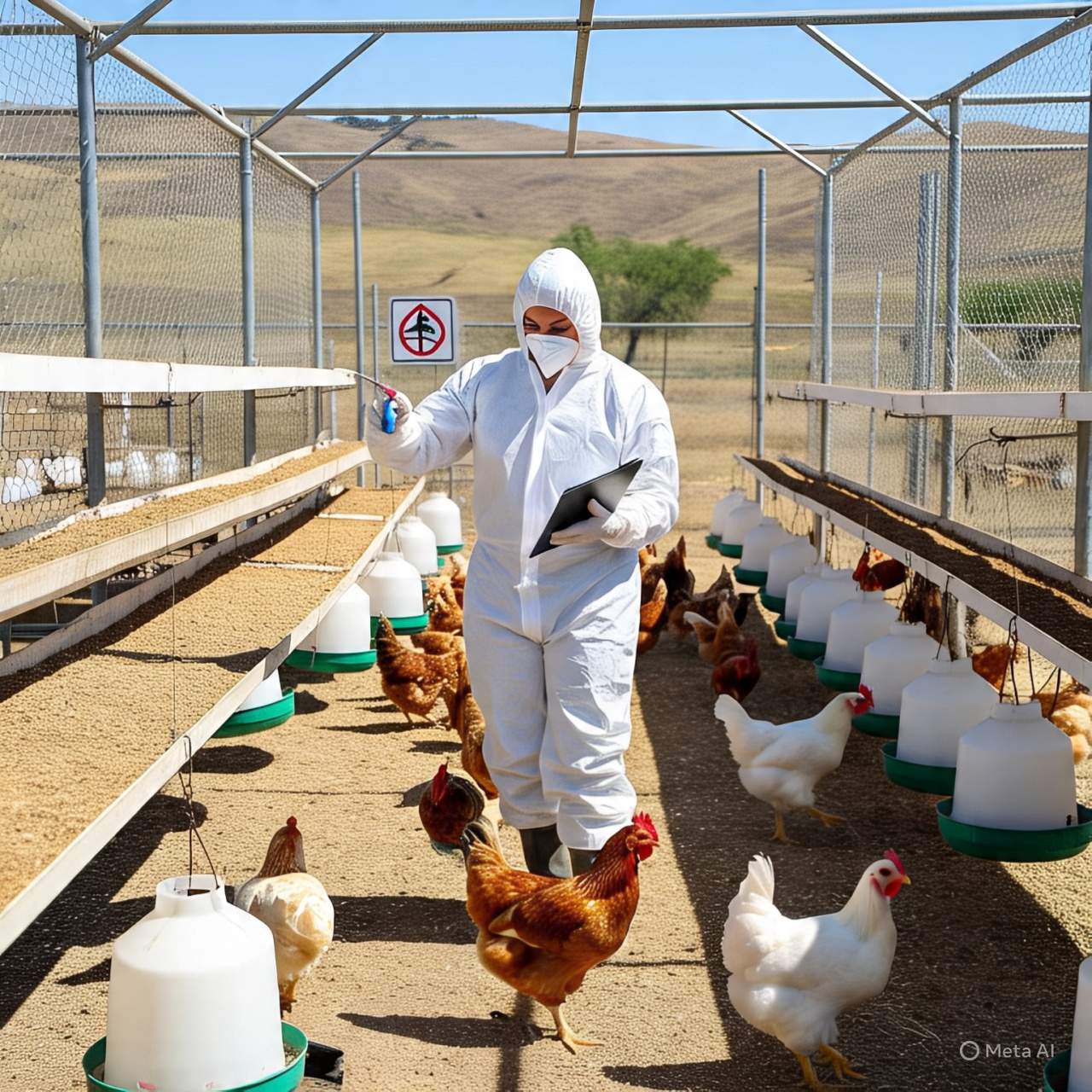How to Build Biosecurity on Your Poultry Farm (Step-by-Step Guide)
Protect your poultry farm from disease outbreaks with this practical biosecurity guide. Learn proven strategies to keep your flock safe and your business thriving.
Biosecurity isn’t just a buzzword in poultry farming — it’s your first line of defense against deadly diseases like Newcastle, Avian Influenza, and Infectious Bursal Disease. Whether you're raising broilers, layers, or breeders, building a solid biosecurity plan is essential for the health of your flock and the success of your farm.
In this guide, you’ll learn exactly how to build biosecurity on your poultry farm, from farm layout and visitor control to cleaning protocols and feed management.
1. Understand the Basics of Biosecurity
Biosecurity refers to the preventive measures taken to reduce the risk of disease transmission. It focuses on isolation, sanitation, and traffic control. Your goal is to prevent diseases from entering the farm, spreading within the flock, and leaving the farm to infect others.
2. Design Your Farm for Biosecurity
The layout of your poultry farm can either protect or expose your birds. Here are key points:
I)Perimeter fencing: Enclose the farm to limit access by unauthorized people, vehicles, and animals.
ii)Single entry/exit point: Restrict movement through one controlled gate.
iii)Distance between poultry houses: Avoid overcrowding and allow space for proper ventilation and movement.
iv)Footbaths and handwashing stations: Install them at the entrance of every poultry house.
3. Control Movement of People and Equipment
People are major disease carriers — even more than animals in some cases.
I)Limit visitors: Only allow essential personnel into poultry areas.
ii)Record logs: Keep a visitor logbook to track anyone entering or leaving.
iii)Protective gear: Require farm-specific clothing and boots. Disposable coveralls are even better.
iv)Dedicated tools: Don’t share equipment between poultry houses unless properly disinfected.
4. Maintain Strict Sanitation Protocols
Cleanliness isn’t optional; it’s a necessity.
I)Daily cleaning: Remove waste, spilled feed, and standing water.
ii)Scheduled disinfection: Disinfect equipment, tools, and poultry houses regularly using effective poultry-safe disinfectants.
iii)Rodent and insect control: These pests are common carriers of pathogens — use traps, bait stations, and physical barriers.
5. Manage New Birds and Deliveries Wisely
Introducing new birds without proper checks can ruin your flock.
i)Quarantine new stock: Keep them isolated for 14-21 days. Monitor for signs of illness.
ii)Source birds responsibly: Only buy from reputable hatcheries with a disease-free track record.
iii)Sanitize delivery vehicles: Especially those bringing feed, birds, or equipment from other farms.
6. Monitor Bird Health Regularly
Early detection can save your entire flock.
i)Daily health checks: Look out for changes in eating, drinking, droppings, and behavior.
ii)Keep records: Maintain up-to-date records on production, mortality, medication, and vaccination.
iii)Work with a vet: Regular vet visits and diagnostic testing can help you stay ahead of potential problems
7. Dispose of Waste and Dead Birds Properly
Improper waste disposal spreads disease quickly.
i)Compost manure properly: Don’t spread raw manure near poultry areas.
ii)Burn or bury dead birds: Deep burial or incineration are the safest methods.
iii)Seal disposal areas: Prevent access by dogs, wild birds, and rodents.
8. Train Your Staff and Keep Them Informed
Your staff are your biggest allies in maintaining biosecurity.
i)Conduct regular training: Teach them the importance of biosecurity and how to follow the rules.
ii)Create SOPs (Standard Operating Procedures): For cleaning, feeding, handling birds, and reporting illnesses.
iii)Reward compliance: Positive reinforcement encourages better adherence to biosecurity protocols.
Final Thoughts
Building biosecurity on your poultry farm is not a one-time event — it’s a continuous commitment. Start with the basics, involve everyone on the farm, and update your protocols regularly to adapt to new threats. The effort you put into biosecurity today can prevent costly outbreaks tomorrow.
Remember: Prevention is always cheaper than cure.

